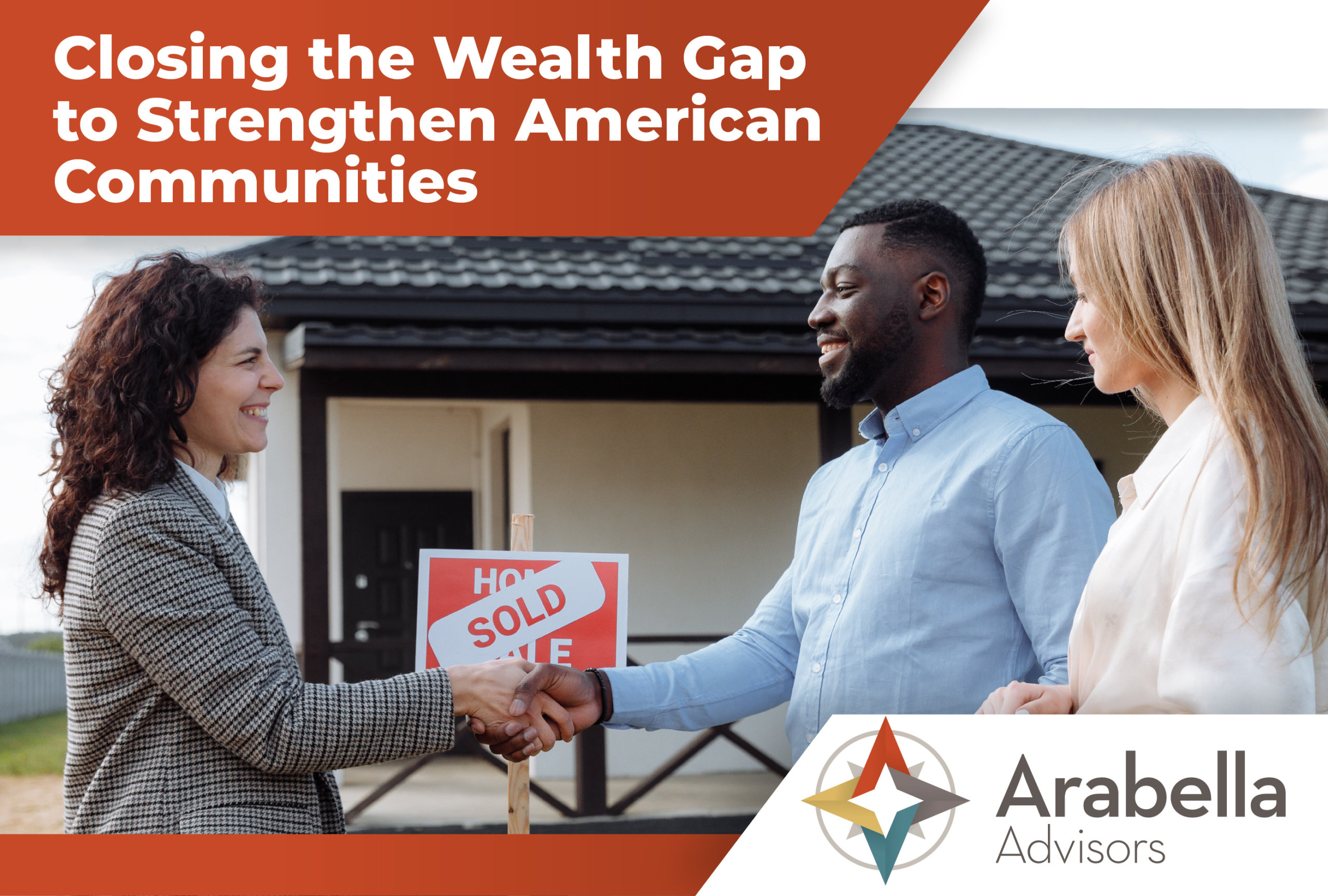5 Takeaways: Closing the Wealth Gap to Strengthen American Communities

Every day, more than 50 million Americans live in or near financial crisis. Meanwhile, underlying inequities threaten to undercut a future of shared prosperity and equitable opportunity across our country. What can philanthropy do to effectively address this pervasive issue?
On March 1, Arabella Advisors and the Council on Foundations assembled a panel of experts to explore this question and surface advice for addressing the wealth gap. Ida Rademacher, vice president of the Aspen Institute, moderated a panel consisting of Lisa Mensah, president and CEO of Oregon Community Foundation; James Head, former president and CEO of East Bay Community Foundation; and David John, senior strategic policy advisor at AARP. The conversation was engaging and far-ranging, covering a diverse array of lessons and reflections from the group’s combined decades of experience.
If you were unable to join us for the webinar, we encourage you to watch the recording. We have also gathered five of the panel’s top-level takeaways below.
1. Wealth-building can and should be a bipartisan issue.
As John put it, “Financial issues are something we can discuss across the aisle to create a solution that actually means something.” Despite record levels of polarization, the panelists shared that equitable wealth-building is an aspiration people on both sides of the aisle have a vested interest in. While certain levers have received pushback largely along party and/or racial lines—Head cited reparations efforts and universal basic income programs as two examples—others, like retirement and homeownership, offer bipartisan appeal and opportunities for productive collaboration.
2. Now is the time for bold action.
For decades, those engaged in the field of wealth have explored and piloted various tactics to address wealth inequality and expand access to opportunity. All the while, the income and wealth gaps have persisted and, in many cases, widened. Accordingly, the panel made a compelling case for moving the field beyond demonstrations of viability. “In my view, it’s time to shatter conventions and start making breakthroughs,” said Mensah. “We’ve been piloting and demonstrating for decades. We know what works. We should be pushing to make it happen, and then bravely communicating it to the world to start changing minds.”
3. Homeownership and retirement are (still) powerful tools for building wealth.
While homeownership is by no means a new suggestion, it consistently emerges as one of the most powerful methods of building long-term wealth. Mensah referred to it as “one of the most naturally American levers,” and added “I have a lot of hope about this tactic.” The panel similarly highlighted retirement savings systems: the issue around which most US wealth policy is centered, but which aren’t always used to full effect. As John shared, the existing system of automatic payroll deductions, employer matches, and investment support works as a brilliant wealth-building tool for those who can use it.
4. The issue is not finding new solutions. It’s increasing access to the solutions that exist.
From retirement and small business ownership to increased income and child savings accounts, panelists shared that virtually all wealth-building tactics currently share the same problem: white, already-wealthy people are far better placed to access them. Head provided staggering statistics from American Progress related to small business ownership: Black Americans own less than 2 percent of small businesses with any employees, compared to white Americans at 82 percent. John raised similar systemic disparities with retirement: AARP reports that 53 of Black private-sector employees and 64 percent of Hispanic employees do not have access to employer-sponsored retirement accounts. “Philanthropy needs to be creative in how we leverage resources to support the levers that we know can work,” said Head, naming program-related investments (PRIs) as a powerful approach to make real progress toward wealth equity.
5. Policy and advocacy are essential on the path to progress.
In addition to direct service and strategic investments, all panelists agreed that a significant policy push is required to meaningfully address the wealth gap. Head noted that community foundations have a unique role to play in this effort given their ability to conduct direct lobbying, but even traditional 501(c)(3) foundations can engage in ongoing policy advocacy. Change through policy is often nonlinear and slow-moving, but it enables systems-level transformation that is often out of reach otherwise. As an example, John pointed to Saver’s Match: a policy in last year’s Secure 2.0 Act that creates a 50 percent government-funded retirement match program for qualifying individuals. While the financial services industry has delayed implementing this policy, it can transform the wealth trajectory of countless Americans when enacted.
You can hear more from the panelists, including the most important lessons each learned from more than 20 years of working to close the wealth gap, by viewing the full recording. Arabella and the Council on Foundations are grateful for our panelists’ time and generosity in sharing their insights, and we look forward to continuing the conversation in ways that advance efforts to meaningfully shrink the country’s wealth gap—and, ultimately, shatter it altogether.
